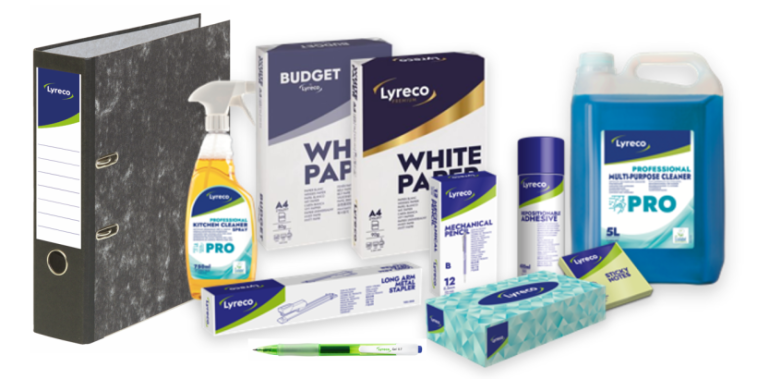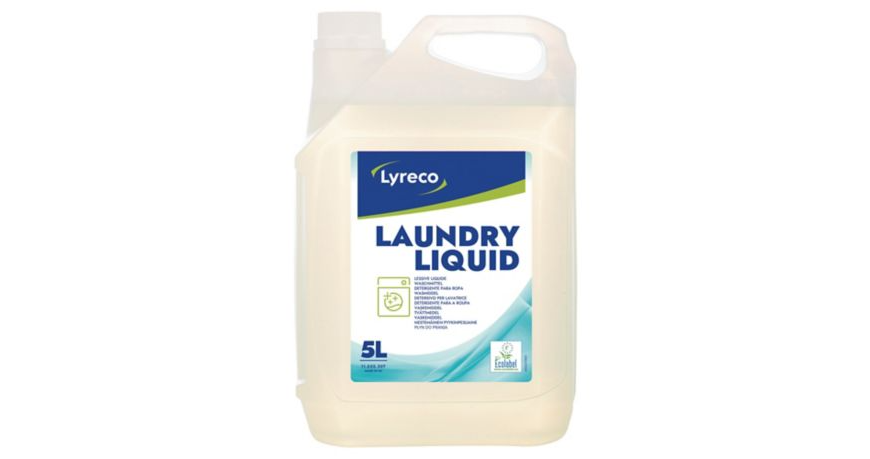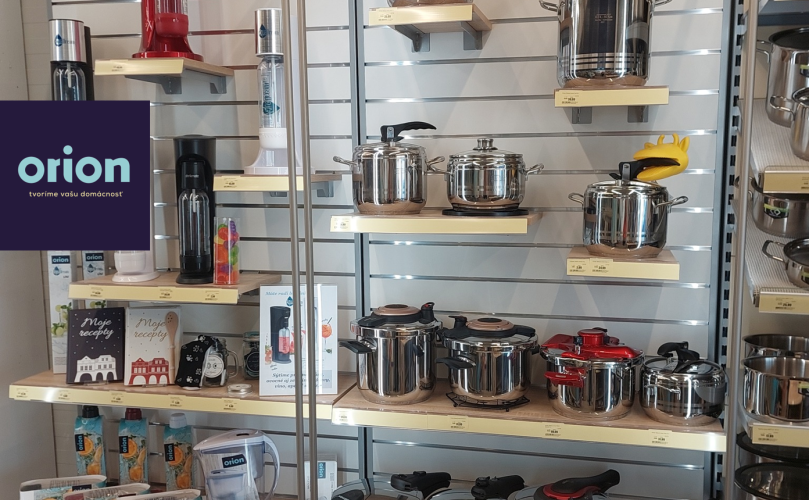
4 tips on how to save money when costs are soaring
Interview with a Key Account manager
Cutting costs at businesses can be tricky if you don’t know where to start. Most people shudder at the mere thought of auditing their expenses. But the good news is that even steps that are small and seem simple can help your company to become more efficient.
This interview with Adela Vejtrubová, our key account manager, sheds light on how to make small changes that deliver impressive results and cost savings.
Who is Adela Vejtrubová?
For nearly eight years now, Adela Vejtrubová has been the sort of sales professional who puts every last ounce into her job. She first gained experience and know-how at Kaumy, before joining Lyreco in 2017 as Key Account Manager New Business, helping new customers to set up processes that will streamline supply and cut costs.

By optimising and right-sizing the ordering process, as well as by narrowing down the supply chain to a single supplier, I can save customers up to 37% of their spend.*

When customers come to you, what are the most frequent needs they have?
Most of the time, I actually engage with customers before they become our accounts. As these tend to be large and corporate customers, they operate through a system of tenders or auctions.
Companies are trying to save on supply costs and buy where they find it most economical to do so. Oftentimes, they order different categories of product from different distributors – for example, sanitary products from one, IT solutions from another, office supplies from a third, and water, milk and coffee from a supermarket.
* Contact our Lyreco specialists for more cost-saving details.

How do you set up cost-cutting procedures for your customers?
I take it one step at a time. First, I go over the customer’s needs with them – what’s bugging them, what issues they’re having with their current vendors, how I can help them, what extra value I can offer them. Then comes the grunt work. I go through the ordering process from the start all the way through to the invoicing. I analyse the pricing. I appraise the items that are being ordered. I look for potential alternatives. I think about how to set up order approvals, favourite product lists...
Even at this stage, I am forming a plan of possible solutions in my head. Then I go back to the customer and we discuss all the ideas in detail. Once we are all in agreement, we go for it together.
Case study: A single vendor for all your workplace needs
A company with branches across the country that was buying from multiple vendors and losing track of spend decided to consolidate and implement a comprehensive sourcing solution. The customer was looking to simplify processes in the hope that this would also drive down costs. They also wanted to do away with the tedious manual processes requiring employees to copy orders from an Excel spreadsheet into the many and varied systems used by e-shops once they had finally secured approval from their managers.
For this customer, I created lists of authorised products that each branch is allowed to order. I introduced an approval system and budgets for each branch based on headcount.
Vendor consolidation and the implementation of Lyreco’s solutions will save each branch at least €100 per order (calculated all the way through to invoicing). Overall, this means the customer has achieved a saving of almost 37% on the individual items they purchase from Lyreco.
By automating the purchasing process, the customer can keep track of their spend and save not only money, but also the employees’ time, which boosts productivity.

Have customers’ needs evolved over the past two years?
Customer needs keep pace with the times we live in. Many customers have realised that virtual technologies save both time and money.
Customers don’t want to dig through papers any more. Instead, they prefer to share documents online. This saves them a lot of money on consumables such as printer toners and inks, office paper and packaging materials.
I have noticed that customers are not as “forgiving” as they used to be. If something goes awry, they want it fixed.

We are also trying to optimise everything we can: orders, invoices, deliveries. Streamlining the purchasing process, consolidating invoices and setting up the supply line efficiently is the key to saving costs at businesses, even at a time when the price of everything is on the up.
Case study: Umbrella supply solution for two countries
A customer with branches in Slovakia and the Czech Republic had different suppliers covering each country. The situation was worst in Slovakia, where they were experiencing problems with one of their vendors.
This meant the priority was to fix the supply issue over there. Parallel to that, the company wanted to economise on costs.
Adela worked with the customer to analyse their needs and then implemented the benefits offered by Lyreco. By analysing the purchasing process in detail, she was able to consolidate the products that were being ordered and set up an approval process and budget. This change gave the customer transparency over the products they were purchasing and their expenses, allowing them to redirect significant resources into investing in their business.

What would you say are some top money-saving tips?
When it comes to finding solutions for customers, I prefer a personalised approach rather than a one-size-fits-all cost-saving “cure-all”. I always advise customers to analyse the entire purchasing process, starting with the quote and ending with the invoice. We often proceed item by item and analyse back orders that have already been delivered.
- What are their purchasing conditions like?
- What products do they buy and how often? Do these products fulfil the customer’s needs?
- Can they replace branded products with equally effective off-brand alternatives?
Even during the initial analysis, I have ideas in my head about what and how things could be done or tweaked. Of course, products often need to be put to the test first, especially when it comes to, say, cleaning chemicals, sanitary consumables, or toners or paper. That’s why sampling is part of the process – the customer is given samples of possible alternatives and, after trying them, decides whether to go with the alternative or stick with a product they already know they can rely on.
Case study: Alternative products
A customer who owns both offices and production halls approached Adela after experiencing a threefold increase in the cost charged by their contracted vendor.
After analysing the various categories of product they were ordering, Adela was able to offer the customer alternative products of the same quality at a better price. Price hikes are inescapable in the world of workplace solutions, but by switching suppliers the customer saved considerable costs.
Find out more about Lyreco products


1. Compare prices
Audit your operating costs and expenses associated with goods and services. Often all you need do is change your service or supply vendor, or consolidate orders. This change can save you hundreds of euros / thousands of crowns / thousands of forints every year.

2. Buy alternatives to branded products
Off-brand does not equate to poor quality! They are often just as effective as products produced by big-name manufacturers. If it works for you and you have enough storage space, invest in concentrates and buy in bulk.

3. Invest in technology
Automation not only saves your employees time, but also increases their productivity. Ditch the paperwork and switch to virtual storage.
Our tip: If you need to have a printed copy of a document on hand at all times, laminate it! That way you can use it for longer without the risk of it becoming damaged. Plus, you don’t have to keep printing a new copy of the same document every time you need it, which saves on consumables.

4. Go green
Replace conventional incandescent bulbs with LEDs. Replace that 10-year-old fridge with a newer, more efficient model. Recycle – printer cartridges, batteries, electronics...
Continue reading

3 steps to control your costs

Customer Experience in the Digital Era

